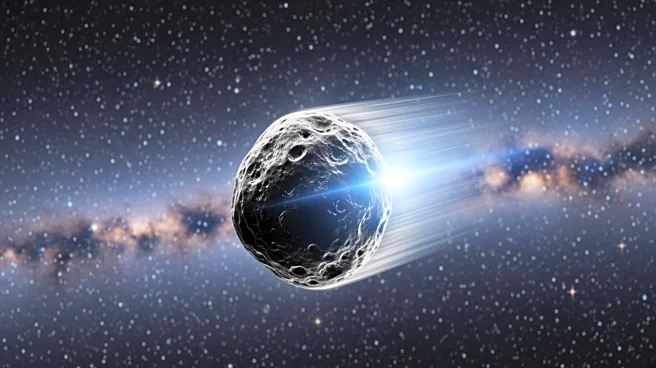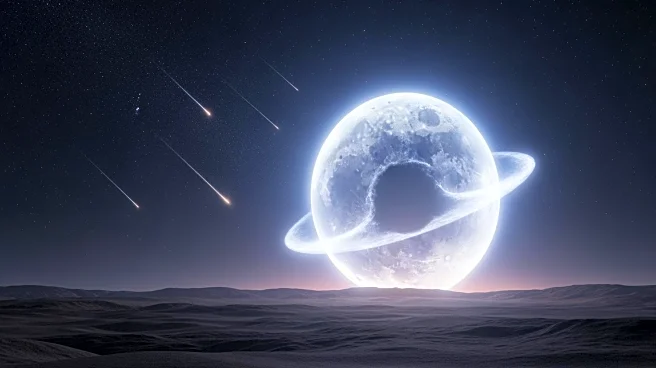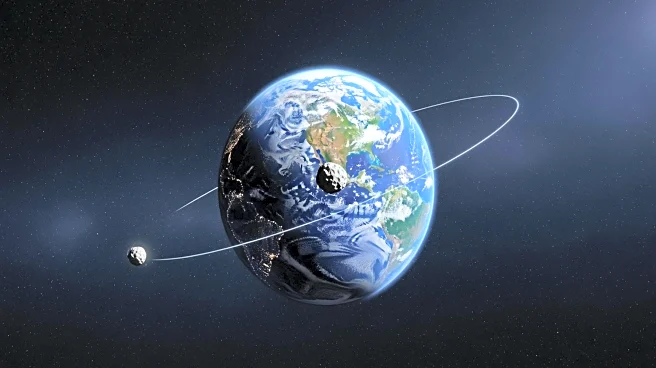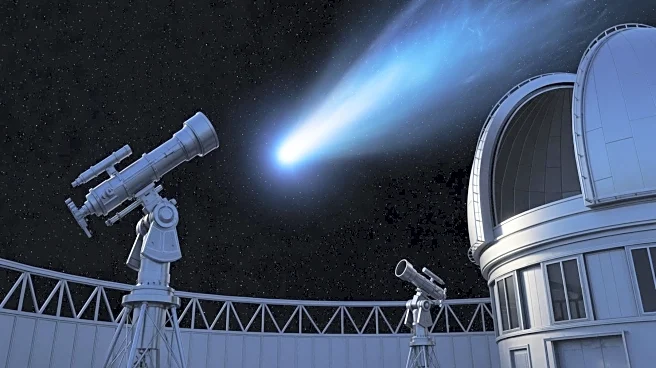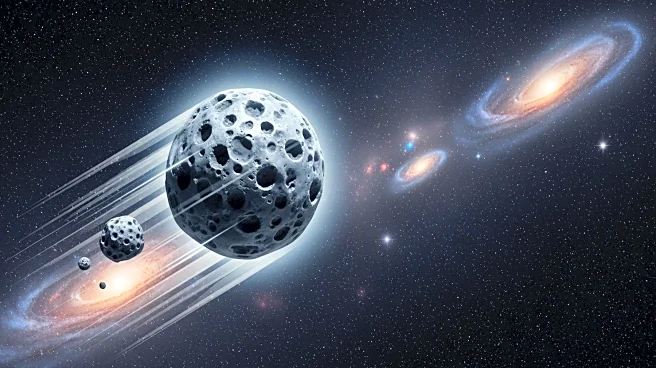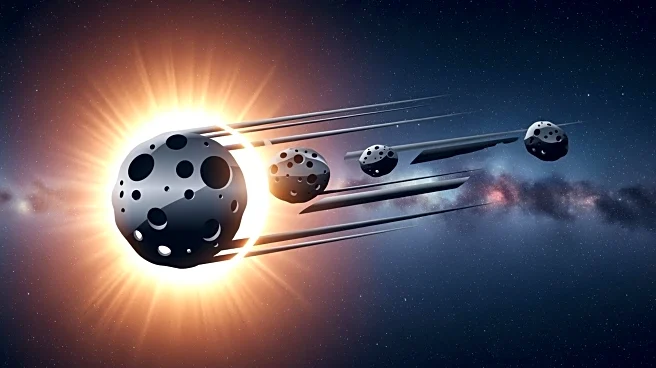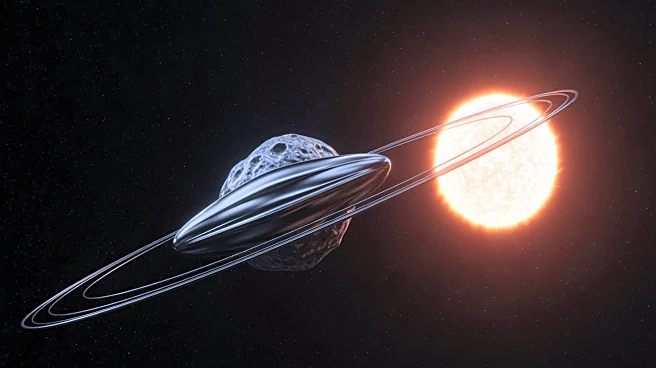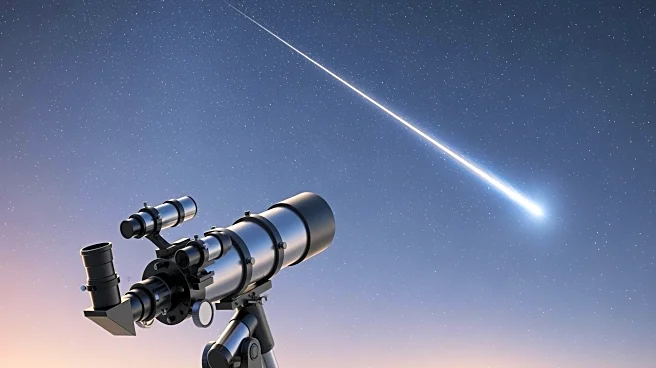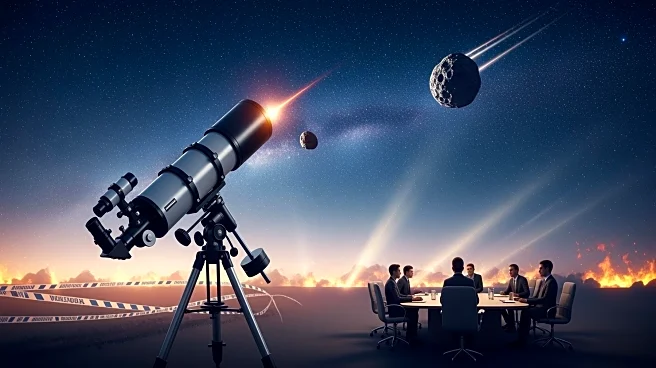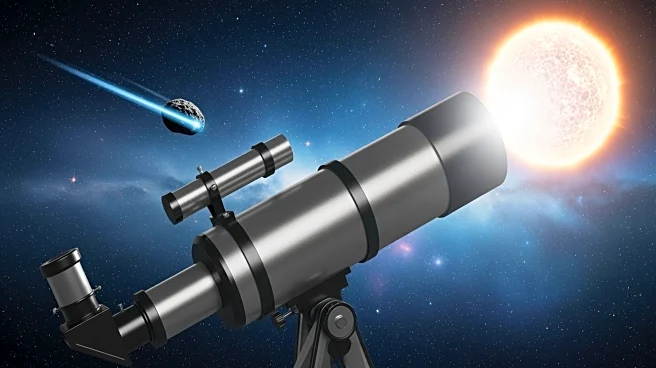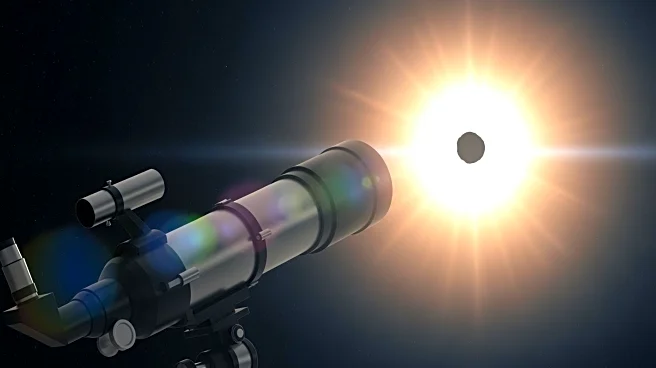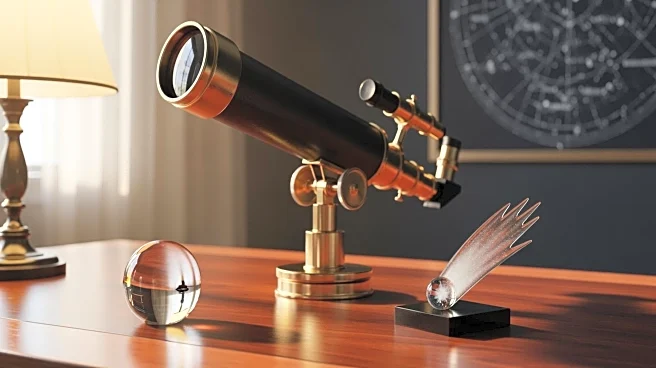What's Happening?
Astronomers have identified the second-fastest asteroid in the Solar System, named 2025 SC79, which orbits the Sun in just 128 days. This discovery was made by astronomer Scott Sheppard of Carnegie University, who is known for his work on small moons
of Jupiter, Saturn, Uranus, and Neptune. The asteroid, approximately 700 meters long, was found hiding in the Sun's glare, a challenging location for detection. Although 2025 SC79 does not pose an immediate threat to Earth, its discovery underscores the importance of identifying asteroids that could potentially collide with our planet. These 'twilight' asteroids, which are difficult to detect due to their proximity to the Sun, can only be observed at dawn or dusk. The research, supported by NASA, utilized the Dark Energy Camera on the NSF's 4-meter Victor M. Blanco Telescope in Chile.
Why It's Important?
The discovery of 2025 SC79 is significant as it highlights the ongoing efforts to identify and monitor asteroids that could pose a collision risk to Earth. Asteroids that orbit close to the Sun are particularly challenging to detect, making them potentially dangerous if they approach Earth. The ability to find and track these objects is crucial for planetary defense strategies. The research not only contributes to our understanding of asteroid dynamics but also aids in developing methods to mitigate potential threats. The financial backing from NASA for such research emphasizes the importance placed on safeguarding Earth from extraterrestrial hazards.
What's Next?
Further observations of 2025 SC79 are planned, although they will require several months due to the asteroid's current position behind the Sun from Earth's perspective. Future studies aim to uncover details about the asteroid's composition, its ability to withstand intense solar heating, and its origins. These insights could enhance our understanding of similar celestial bodies and improve our ability to predict and respond to potential asteroid threats.
